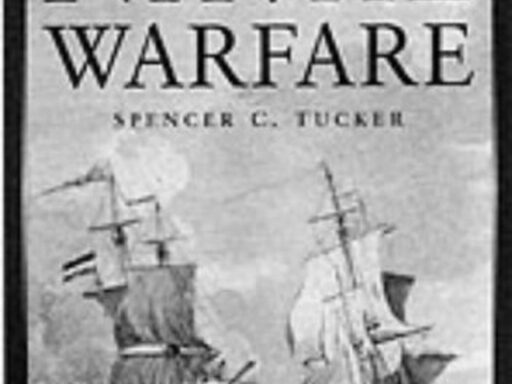The assassinations of Presidents James A. Garfield and William McKinley are less prominent in public memory compared to Abraham Lincoln’s due to the distinct historical contexts, presidential legacies, and the lasting narratives formed after each death. Contemporary grief was intense for all three, but Lincoln’s assassination remains uniquely ingrained in American culture because it coincided with the end of the Civil War and became a symbol of national trauma and reconstruction.
Lincoln’s assassination in 1865 had immediate and profound meaning. It occurred just days after the Civil War ended, a conflict that defined the nation’s identity and future. His death symbolized both the fragility of the Union and the painful challenges ahead during Reconstruction. This timing made Lincoln’s assassination inseparable from the country’s most significant crisis. National discourse consistently links the two events, cementing the assassination in collective memory.
In contrast, Garfield and McKinley were assassinated in periods of relative national stability. Garfield died in 1881, well after Reconstruction ended, while McKinley was killed in 1901 during times of economic recovery and rising American global influence. Their assassinations, though tragic, did not coincide with a defining national crisis. Therefore, their deaths lacked the same symbolic weight that Lincoln’s carried.
Both Garfield and McKinley experienced substantial public mourning immediately following their deaths. Garfield’s funeral drew massive attention, with reports noting approximately 70,000 people at the Capitol in Washington, D.C., and 250,000 in his home state of Ohio. Newspapers of the time remarked on the size and solemnity of his funeral procession, calling it “the most impressive funeral ever witnessed in America,” a remarkable assessment since Lincoln’s recent assassination was still fresh in memory.
McKinley’s funeral, held in Buffalo, New York, attracted between 75,000 and 100,000 attendees. The ceremony was simpler and reflective of McKinley’s personal tastes, conveying sincerity rather than grandiosity. Both funerals demonstrated significant public grief but diminished in cultural impact over time.
A critical factor in the lasting remembrance of these presidents stems from their presidential legacies. Garfield served only four months and accomplished little of lasting consequence due to ongoing political factionalism and a deadlocked Congress. His main noted action was calming internal party strife and some minor reforms, but these did not resonate deeply in public consciousness after his death.
McKinley, on the other hand, was a popular and effective leader during his tenure. He oversaw victory in the Spanish-American War and economic recovery from the Panic of 1893. Yet, his accomplishments were soon overshadowed by the Progressive Era reforms and the charismatic leadership of his successor, Theodore Roosevelt. Roosevelt’s dynamic presence redefined American politics and public memory, making McKinley’s legacy less prominent despite his popularity and accolades during life.
Historical narratives also shaped the remembrance of these assassinations. Lincoln’s death became central to the national story of healing, freedom, and unity. His assassination embodies the moral and political struggles of the era. Garfield’s death represented the dangers of political factionalism and the excesses of the patronage system; his assassination helped spur civil service reforms like the Pendleton Act. Once those reforms took hold, Garfield’s broader significance faded.
McKinley’s assassination is often remembered more as a trigger for anti-anarchist sentiment than as a moment of national mourning. The political backlash against anarchism shaped early 20th-century policies and public fears, but McKinley’s personal legacy and his death’s emotional impact became secondary over time in historical memory.
Additional elements contributed to Lincoln’s lasting memory. The circumstances of his death—being moved from the theatre where he was shot to a nearby boarding house due to social norms around venues—added a solemn reverence. This attention to setting and symbolic detail contrasted with the other presidents’ deaths.
In summary, contemporary reactions to all three assassinations were intense and meaningful. Garfield and McKinley were both mourned deeply, with funeral processions and masses paying respects. However, Lincoln’s assassination remains unique due to its timing, symbolic significance, and the ongoing influence of his leadership on America’s identity. The legacies of Garfield and McKinley, while significant during their times, did not evoke the same enduring national mythology.
- Lincoln’s assassination tied closely to the Civil War’s end and Reconstruction, making it symbolic and central to American history.
- Garfield and McKinley’s assassinations happened in more stable times, making their deaths less pivotal in the national narrative.
- Contemporary mourning for Garfield was massive and comparable to Lincoln’s; McKinley’s funeral was sincere but smaller.
- Presidential legacies influenced remembrance: Garfield’s short, politically fraught term and McKinley’s overshadowing by Roosevelt reduced lasting memory.
- McKinley’s assassination sparked political backlash against anarchism, overshadowing personal grief in historical memory.
Why Are the Assassinations of Garfield and McKinley Overlooked Compared to Lincoln’s?
The simple answer? Lincoln’s assassination is etched deeply into America’s soul because it came right after the Civil War and was the first presidential assassination. Garfield and McKinley’s tragic deaths, while mourned at the time, didn’t cement themselves the same way due to timing, impact, and legacy. Let’s unpack that with some history and nuance.
When Lincoln was assassinated in 1865, the United States was crawling out of its most brutal conflict ever—the Civil War. His death was not just a national tragedy; it was deeply symbolic of the fragile hope for Reconstruction and reunification. People today can’t even talk about the Civil War without mentioning Lincoln’s assassination; they’re inseparable in the American narrative.
On the other hand, Garfield’s assassination in 1881 and McKinley’s in 1901 happened during more stable, peaceful times. The Reconstruction was over, and while Garfield was quite popular, his term was painfully short and politically fraught, lasting only four months before he succumbed after 80 days of lingering illness. McKinley, meanwhile, presided over economic recovery and a victorious war, yet his legacy quickly faded into the shadow of his successor, Teddy Roosevelt, whose dynamic leadership marked the Progressive Era.
Was the Public Grief at Their Deaths as Intense as Lincoln’s?
Absolutely, at least in the moment. Garfield’s funeral drew massive crowds rivaling Lincoln’s own. Reports suggest around 70,000 people surrounded the Capitol where he lay in state in Washington, followed by 250,000 mourners in Cleveland. The Boston Globe described Garfield’s funeral procession as “the most impressive funeral ever witnessed in America,” even though Lincoln’s funeral was still fresh in memory!
McKinley’s funeral was more modest—about 75,000 to 100,000 attended in Buffalo, New York. It reflected his simple, sincere character rather than a drop in respect or affection.
So, grief was loud and clear for all three, yet only Lincoln’s death reverberates continuously. Why is that? Let’s explore.
Presidential Legacies: Why Do They Matter?
When you think of Garfield, can you quickly list major policy achievements? Probably not. His short presidency was mired in factionalism, political patronage struggles, and juggling office seekers. His main political maneuver was forcing a political boss, Roscoe Conkling, to resign. That’s not exactly something people chant about in history class. He did refinance Civil War bonds and appointed Frederick Douglass, notable but hardly enough to engrave his memory in granite.
McKinley was different. He was an immensely popular figure who won the Spanish-American War and oversaw a booming economy. However, his legacy quickly became overshadowed by Teddy Roosevelt, whose energetic leadership defined the Progressive Era. McKinley became a footnote, remembered more for sparking political anti-anarchist backlash than for his policy achievements.
In contrast, Lincoln was the architect of preserving the Union and abolishing slavery. His leadership in the Civil War and his vision for Reconstruction transformed the United States fundamentally. His assassination froze that vision in time, adding a layer of tragic martyrdom that Garfield and McKinley never achieved.
The Role of Historical Narrative and National Identity
The way a nation remembers events isn’t just about facts; it’s about stories that define that nation’s identity. Lincoln’s death became integral to the American story of unity, sacrifice, and new beginnings. It’s a textbook case of how historical narratives shape collective memory.
Garfield’s assassination, conversely, symbolized the darker side of political factionalism and the dangerous excesses of patronage. His death triggered reforms like the Pendleton Act, but the partisan battles he died as a casualty of became obsolete, pushing his legacy into the background.
McKinley’s death stirred political backlash against anarchism—people feared chaos. Yet, this focus on political ideology rather than personal legacy means his assassination is often taught within broader contexts, not as a stand-alone national tragedy.
What About the Details Surrounding Lincoln’s Death?
Here’s a quirky tidbit: Lincoln didn’t die in the theater where he was shot because it was deemed morally questionable at the time—yes, people scandalized over theater attendance back then! Instead, he was moved across the street to a boarding house on Good Friday, which also likely helped frame his death as a solemn, almost sacred event, deepening public mourning.
Summary: Putting It All Together
- Lincoln’s assassination is woven tightly with the conclusion of the Civil War, anchoring it in a defining chapter of American history.
- Garfield and McKinley, despite being mourned intensely, had presidencies without comparable transformative legacies. Garfield’s term was too short and chaotic to leave a lasting mark. McKinley’s achievements were overshadowed by the Progressive Era and Roosevelt’s charisma.
- McKinley’s assassination is remembered more for sparking political reaction than for national grief or funereal grandeur.
- Grief for Garfield and McKinley was strong at the time but lacked the narrative glue that keeps Lincoln’s memory vivid in American culture.
So, Are Garfield and McKinley Worth Remembering More?
Absolutely. Their stories reveal much about America’s political evolution. Garfield’s death exposed the pitfalls of factionalism and led to civil service reform. McKinley’s assassination reminds us how political violence can sway national policies.
Perhaps it’s time we dust off their legacies and appreciate the complexities of history beyond the shining beacon of Lincoln’s story. After all, history isn’t just a spotlight on heroes; it’s a tapestry of all voices—some louder, some quieter, but all important.
Have You Ever Wondered What Presidential funerals looked like then?
Picture Garfield’s long funeral procession snaking from New Jersey to Ohio, with tens of thousands lining the streets. Or McKinley’s simpler, heartfelt goodbye. These events stirred deep emotion, yet the nation’s pulse moves on fast.
Next time history class drifts quickly over those presidencies, remember: the assassination itself is just one thread. The legacy, timing, and national narrative are the tailors that decide which thread gets woven into our collective memory for centuries.


